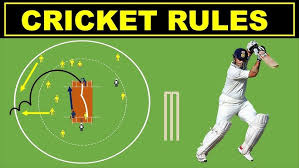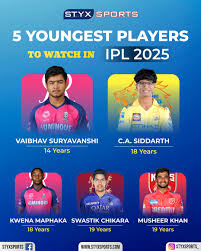A Complete Guide to Cricket Rules for Beginners
Cricket is one of the most popular sports in the world, especially in countries like India, Pakistan, Australia, England, and South Africa. For newcomers, however, the game can seem complex with its unique terminology, formats, and set of rules. This guide aims to simplify cricket for beginners by covering the basic rules, roles, and gameplay across different formats.
🏏 What is Cricket?
Cricket is a bat-and-ball game played between two teams, each with 11 players. The primary objective is to score more runs than the opposing team. The game is usually played on an oval-shaped field with a 22-yard-long rectangular pitch in the center.
🏟️ Basic Structure of the Game
Each team takes turns to bat and bowl (field). The team that bats tries to score runs, while the bowling team tries to get the batters out and restrict runs. Once the batting team loses all its wickets or finishes its allotted overs, the teams switch roles.
🕒 Formats of Cricket
There are three main formats of cricket:
1. Test Cricket
- Played over five days
- Each team gets two innings
- No limit on overs
- Considered the purest and longest format
2. One Day Internationals (ODIs)
- Each team plays 50 overs
- Matches completed in about 8 hours
- Part of ICC World Cup format
3. Twenty20 (T20)
- Each team gets 20 overs
- Matches last around 3 hours
- The fastest and most entertaining format
🧍♂️ Key Roles in Cricket
1. Batsman/Batter
- Tries to score runs by hitting the ball
- Two batters are on the pitch at a time
2. Bowler
- Delivers the ball to the batter with the aim to get them out
- Each over has 6 legal deliveries
3. Wicketkeeper
- Positioned behind the stumps
- Catches the ball, attempts stumpings, and fields deliveries
4. Fielder
- Assists the bowler in stopping runs and getting batters out
- Positioned strategically around the ground
🏃♂️ How to Score Runs
Runs can be scored in several ways:
- Running Between the Wickets: After hitting the ball, the two batters run to opposite ends of the pitch. Each successful swap counts as 1 run.
- Boundaries:
- Ball hits the ground before reaching the boundary: 4 runs
- Ball crosses boundary without touching the ground: 6 runs
- Extras:
- Wide ball: Bowler delivers outside legal reach of batter – 1 extra run
- No-ball: Illegal delivery (e.g., overstepping) – 1 run plus free hit
- Bye and Leg Bye: Runs taken after the ball misses the bat or hits the body
❌ Ways a Batter Can Be Out
There are ten major ways a batter can be dismissed. Here are the most common:
- Bowled – Ball hits the stumps and bails fall.
- Caught – Ball is caught by a fielder without touching the ground.
- LBW (Leg Before Wicket) – Batter is hit on the pads in front of the stumps.
- Run Out – Batter fails to reach the crease before the ball hits the stumps.
- Stumped – Wicketkeeper removes the bails when the batter is out of their crease.
- Hit Wicket – Batter accidentally hits their own stumps.
- Handled the Ball, Obstructing the Field, Timed Out, and Hit the Ball Twice are rare but possible modes of dismissal.
🔢 Understanding Overs and Innings
- Over: A set of 6 legal balls bowled by one bowler.
- Innings: A team’s turn to bat. Depending on the format, a team may get 1 or 2 innings.
Overs per Format:
- Test: Unlimited
- ODI: 50 overs
- T20: 20 overs
🧮 Scoring and Winning
The winner is determined by who scores more runs:
- In ODIs and T20s: Team with the highest runs in 1 inning wins.
- In Tests: If one team scores more in two innings combined, they win. If both fail to win in 5 days, it’s a draw.
- Tie: If both teams score the same number of runs
- Super Over: In limited-overs cricket, a tiebreaker over is played to determine the winner.
🧠 Important Cricket Terminology
| Term | Meaning |
|---|---|
| Crease | The lines near the stumps that define the batter’s safe zone |
| Duck | A batter getting out without scoring a run |
| Maiden Over | An over in which no runs are scored |
| Century | A batter scoring 100 runs in a single inning |
| Hat-trick | A bowler taking 3 wickets in 3 consecutive balls |
| Powerplay | A phase of limited-overs games with fielding restrictions |
| All-rounder | A player skilled in both batting and bowling |
👨⚖️ Umpires and Decision Making
There are usually two on-field umpires and one third umpire (TV umpire). Umpires make decisions about:
- Outs
- No-balls and wides
- Boundary checks
With the Decision Review System (DRS), players can challenge decisions using technology like:
- Hawk-Eye
- UltraEdge
- Ball Tracking
👕 Team Composition
A typical cricket team has:
- Top Order: 1–3 (Main batters)
- Middle Order: 4–7 (Batters + all-rounders)
- Lower Order: 8–11 (Bowlers)
A balanced team has a mix of:
- Fast bowlers
- Spinners
- Batsmen
- All-rounders
- Wicketkeeper
🌍 Major Cricket Events
- ICC Cricket World Cup (ODI – Every 4 years)
- ICC T20 World Cup (Every 2 years)
- ICC World Test Championship
- Asia Cup
- Franchise Leagues:
- Indian Premier League (IPL)
- Pakistan Super League (PSL)
- Big Bash League (BBL)
- Caribbean Premier League (CPL)
👦 Tips for Beginners
- Watch and Learn: Start with watching T20 matches to understand flow.
- Practice Basics: Learn how to hold a bat, bowl properly, and field.
- Know the Field: Understand player positions and movements.
- Play Informally: Gully or backyard cricket is a great way to practice.
❤️ Why People Love Cricket
- Combines skill, strategy, and athleticism
- Different formats for every type of fan
- Deep rivalries and national pride
- Individual brilliance and team strategy both matter
- A global sport with passionate followers
🏁 Final Thoughts
Cricket may seem complicated at first, but once you grasp the basic rules, it becomes an exciting, strategic, and deeply enjoyable sport. Whether you’re a casual viewer or a budding player, understanding these fundamental concepts will enhance your experience of the game.
With T20 cricket growing and new talent emerging globally, there’s never been a better time to learn cricket. So grab a bat or tune into a match—and start your cricketing journey today!



